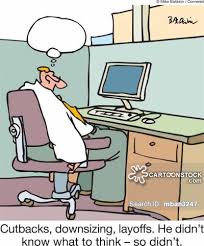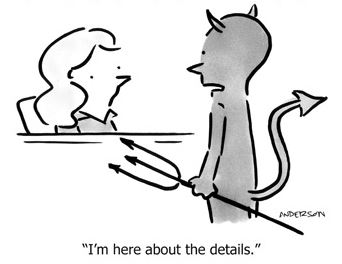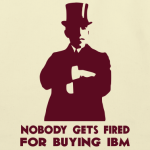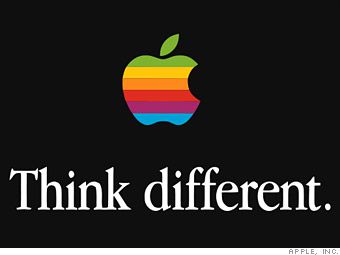 I've been involved in 6 layoffs, 3 on the delivery, 2 as a surviving employee and 1 on the receiving side. These included wildly successful companies before and after layoffs. There are common elements in big and small companies but small companies suffer more organizational trauma (those affected suffer the same trauma). This post is directed at small competitive company CEO's (<100 people).
I've been involved in 6 layoffs, 3 on the delivery, 2 as a surviving employee and 1 on the receiving side. These included wildly successful companies before and after layoffs. There are common elements in big and small companies but small companies suffer more organizational trauma (those affected suffer the same trauma). This post is directed at small competitive company CEO's (<100 people).
First and foremost as the CEO you need to lead, be in the middle, present and available for all meetings with the affected, feel the pain, remorse and self-examine what you could have done better. This event will shape the company culture and it's capacity and capabilities going forward. Laying the bulk of the problem off on your leadership team is pansy, this is your station as the CEO.
Follow advice from people experienced in human resources e.g. safety during the event (police present), documentation, exit interviews, outplacement etc. but this isn't HR's job, as CEO you need to get the details right while keeping the big picture view to re-energize the company.
Here are my core principles:
Company
1) Future
The business outcome after the layoff is profoundly impacted by how well you managed these 2 issues:
1- Who's in the boat going forward? -Everyone is fair game in a small competitive company cut, seniority and past contributions are tie breakers, not policy. Friends and founders are the hardest to let go.
2- How deep did you cut? -Size for the worst realistic scenario by cutting deeper than you think. You get one shot for people to bounce back from the adversity, make it over... take the big hit now! Rolling layoffs = dead company.
2) Speed
- One bad day. Execute swiftly in a single day, plan every 15 minutes, communicate clearly to everyone involved... all eyes are on you.
3) Relief
- After the affected have left, communicate clearly that it is over. It's OK to be sad and grieve along with the company.
4) Repurpose
- You're smaller... take work off the table and refocus on core initiatives going forward.
People Affected

1) Them
- Tell them you're sad, it was absolutely necessary, it's not about them you'll miss them, but the decisions are final.
2) Compassion
- Be compassionate to everyone, this will ripple through their self-esteem, lives and family. Expect crying, anger and shock, possibly even violence and vengeance, treat with utmost respect.
3) Forward
- Describe how important it is for them to look forward to new beginnings but be the backbone that moves everyone along, thank them for their service and contributions.
4) Help
- Provide as much help, references, out-placement, severance etc. as you can. Employees will be watching, this is where the rubber meets the road for trust, what-you-say vs. what-you-do is in high definition regarding company values around people.
Employee's Remaining
1) Imperfect
- Make it clear you did your best, probably made mistakes, but after discussing with managers, you made the final decision for the people that were forced to leave. Take the responsibility hit from your managers because some employees might think the company picked wrong people, you're batman... you can handle it.
2) Over
- Time for an all hands meeting message: "... it's over, we planned for a worst case, you're secure ... questions?"
3) Sad
- Be sad the world's this way along with everyone else.
4) Focus
-Communicate clearly that this is not for nothing, you need their help. Re-energize by removing some work and focus the whole company on the critical challenges, be it sales, new products, customer retention etc. Ask for inputs on improvements, remind everyone that business is a marathon, not a sprint.
My worst experience was as a CEO during the 2000 tech bubble burst when I had to layoff over 1/3 of the company including founders and friends. Our VC' s had portfolio teams that curled up and sucked their thumb during those times, don't be one of those, they were pansy's and were canned.
company including founders and friends. Our VC' s had portfolio teams that curled up and sucked their thumb during those times, don't be one of those, they were pansy's and were canned.
Layoffs change all companies, from temporarily reducing morale to rewriting the "employee contract". Small companies don't have the "cultural momentum" large ones have, so they are always profoundly changed.
The best way to avoid layoffs is by making tough love business and people decisions everyday... especially when times are good.
I hope this helps.



















